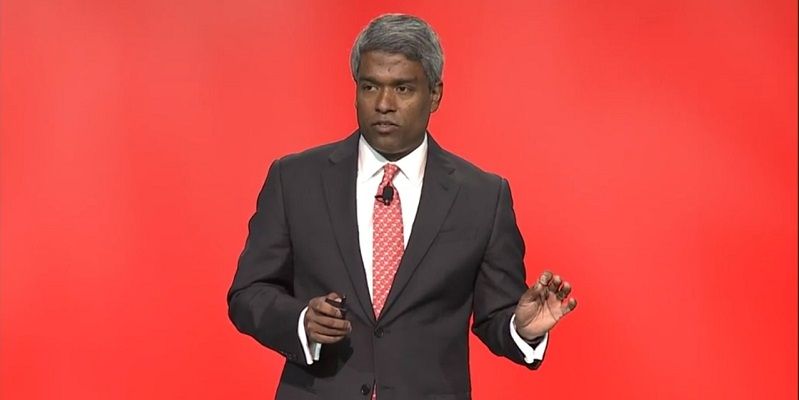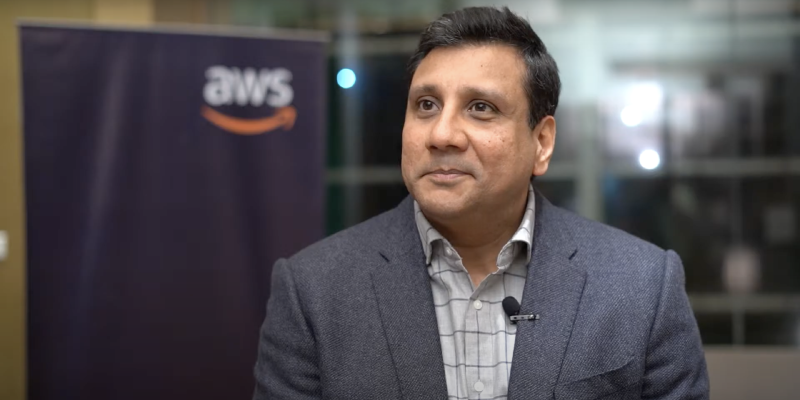The race is on – will Netflix maintain pole position?
Spandan Sharma

Thursday November 23, 2017 , 8 min Read
Be it a white-collared professional, housewives, or the thelewaala bhaiya from across the road, access to smartphones and high-speed data has trickled to every stratum of society and millions around the globe. This proliferation is the single-most dominant factor behind spiking content consumption patterns. Tapping into this massive appetite, the likes of Netflix and Amazon Prime Video have disrupted the comfort zones of the erstwhile “rulers” of entertainment – Hollywood, Bollywood, and cable TV channels.
As Netflix and Amazon Prime Video continue to hog a large chunk of the market share, there is a still scramble among subscription-based video streaming services to draw consumers worldwide. On the back of growing consumer demands, smaller streaming services – with their hyperlocal content – are also mushrooming in large numbers to give the giants a run for their money.
We look at who is leading the race and the future of subscription-based video streaming in India and elsewhere.

Source: Shutterstock
First mover’s advantage
Netflix has an early mover advantage, confirming over 100 million subscribers globally. By January 2016, the platform was available in 190 countries worldwide – that’s 97 % of the global market.
Following closely on Netflix’s heels, Amazon launched its video streaming service worldwide (except Mainland China, Syria, Iran, and North Korea) in December 2016 and made quick inroads into homes and living rooms around the world.
Clearly, video streaming is a rapidly growing trend for entertainment consumption, and forecasts show this is going to be an interesting race. A Cisco Visual Network Index report from September 2017 estimates that global video traffic will rise to 82 percent of all consumer internet traffic by 2021, as compared to 73 percent in 2016.
On their home turf, both Netflix and Amazon have been catering to audience tastes, with each trying to overtake the other in the race for market share. However, the two giants are also facing stiff competition from other emergent platforms and services, many of whom rely on exclusive content to attract consumers.
For example, HBO Go has taken on the mantle of a regional competitor by launching its hyperlocal entertainment service across smaller markets, such as HBO Nordic, and offering exclusive first-access to groundbreaking original content like Game of Thrones. It is available as an Over-the-Top (OTT) and Video-on-Demand (VOD) service, which can be purchased without a cable subscription.
Following close on the heels of these three biggies is Vudu, which has a Walmart deal as a significant USP. A Vudu subscription is available for free and viewers can stream content on Walmart.com.
Hulu is also upping the ante through exclusive shows and groundbreaking original content; the platform’s original production The Handmaid’s Tale recently won five out of its 13 Emmy nominations.
The India story
Spike in high-data consumption and access to smartphones has allowed many Indian customers to enter the market for high-quality streaming video content – services which Netflix and Amazon Prime Video are only too happy to offer.
The two giants both entered the Indian market last year, and have seen sizeable growth respectively. Differences in their pricing models (Netflix starts at Rs 500 a month, while the Amazon Prime subscription costs Rs 999 for a year), as well as content offerings (Prime Video’s catalogue of Indian content is more diverse and well-defined as compared to Netflix) has meant that Prime Video has a bit of an edge over Netflix. However, Netflix’s outstanding quality and technical offerings (4K streaming, multiple user profiles, etc.) even the odds quite nicely.
Not to be left behind, several other platforms have also begun offering services, often backed by large production houses. Viacom18’s Voot, Sony’s Sony LIV, Star India’s Hotstar, Balaji Telefilms’ ALTBalaji, and other platforms are vying for space in the sector too, often relying on their popular current and past TV programming to attract viewers. For example, Hotstar gained a sizeable foothold with its live sports content – particularly live cricket – as well as its recent deal with HBO that allows it to stream HBO exclusives like Game of Thrones.
With India’s viewership figures steadily increasing, it’s a key market for local as well as global streaming services. At the same time, these players are also expanding their reach in other territories across Asia.
Rest of Asia
Just like in India, Netflix and Amazon face stiff competition from local players who are often priced much more competitively and offer consumers more relatable local content.
According to Netflix officials, Asia continues to be one of the biggest challenge markets for the platform, and the company will continue to invest resources to crack the region.
Stacking up the cards in Asia are well-funded services like Malaysia’s iFlix and Viki, a Singapore-based video platform that recently expanded to offer services across the Southeast region, offering TV series and movies translated into more than 150 languages. ViKi’s popularity has even helped it develop syndication partnerships with platforms like Hulu and Netflix, helping it consolidate its market share further.
Other major competitors in the region include Singapore-based HOOQ, a local content-focused startup that also has a large catalogue of international content; pay-per-view television-centric Malaysian platform Tribe, that also offers services in Indonesia, the Philippines, and Singapore; Taiwan’s CatchPlay that focuses exclusively on movies; Chinese giant Viu; as well as American companies like HBO Go.

Rest of the world
Europe: Elsewhere, Netflix crossed two million subscribers in Germany and France soon after its global launch in 2016. However, the platform still faces stiff competition from linear pay-TV operators in the region, such as Sky. There is also the challenge of low pay-TV penetration, a number that is growing slowly now with the expansion of the Internet. With the launch of HBO’s OTT service in Central Europe in mid-2017, HBO has done its bit to seal the deal across Europe.
In the face of competition, local European TV networks have upped their game too. In an unprecedented move, these TV networks have also begun commissioning multiple seasons of the region’s favourite shows in order to keep them away from Netflix and Amazon.
Middle East: The Middle East too has some pretty big mainstream networks and broadcasters like Fatafeat, Al Aan, Bein Sports, OSN, and other noteworthy digitally-native streaming services. Crucially, many of these services have been around for several years before Netflix’s entry into the market, making them stiff competition for the global giant.
For example, Saudi Arabia-focused Starz Play Arabic has been offering localized content to 17 countries in the Middle East since 2015, and even boasts six-figure subscription figures. Icflix has been offering content in English, Arabic, and French in the region since 2013. Beirut-based Cinemoz was founded in 2011 and offers a wide variety of Arabic films, documentaries, and shows for free.
Africa: Much of Africa is an untapped market for subscription-based video streaming. Platforms like Netflix, Amazon Prime Video, and ShowMax are available in countries like South Africa, but many countries in the continent have only recently developed infrastructure to facilitate streaming offerings. Local players like Kwese have begun getting into the game through offerings like the Roku-powered set-top box Kwese Play. Africa could well be the next big battleground for subscription video streaming alongside Asia.
Australia: In 2015 Netflix and Stan, two big video-streaming services, were launched in Australia. Two years later, the market is largely dominated by five platforms – Netflix, Stan, Foxtel Now, Amazon Prime Video, and Quickflix. Since their launch, Netflix and Stan have managed to establish themselves firmly, with high-quality offerings, competitive pricing plans, and a wide range of content, with Stan particularly offering a range of local shows.
Amazon Prime Video is relatively new to the market but is steadily building its user-base, with more exclusive content scheduled to roll out soon. Quickflix is a DVD-rental platform that also offers streaming services and pay-per-download offerings, but the company has undergone restructuring several times in the recent past and has an uncertain future.
Given this state of affairs, the fortunes of Netflix seem quite stable in Australia for the moment. However, future growth plans for Stan and Amazon Prime Video could pose a serious threat to Netflix’s dominance in the region.
Conclusion
Netflix’s presence in an overwhelming number of countries around the world gives it a distinct advantage in terms of revenue and reach. As the company continues to evolve, with a new focus on acclaimed original content like Stranger Things, it looks set to maintain its market leader position for the near future.
However, competition is not far behind. Amazon Prime Video, in particular, offers the biggest threat to Netflix, backed by the e-commerce giant’s sizable war chest and resources. Also, Netflix faces stiff competition in several markets from smaller platforms relying on local content to drive numbers. Will the global giant manage to successfully adapt to the diversity of its markets and fend off these competitors? We believe the next few years will have the answer.










